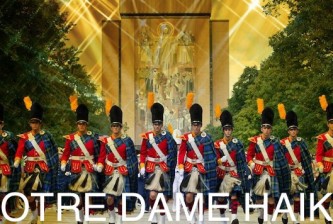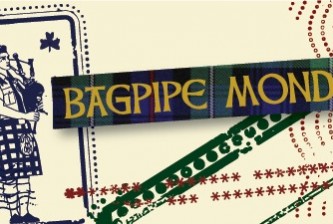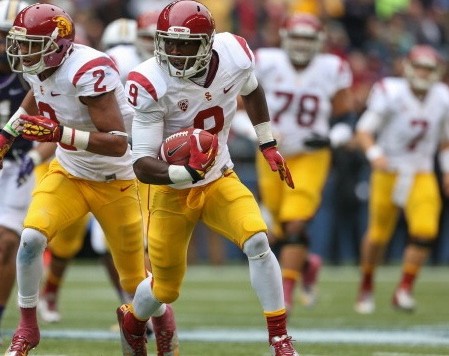Earlier this week, Lane Kiffin announced that Matt Barkley will not be playing in Saturday's game against Notre Dame. With Barkley out, the Trojans' upset hopes now rest on the arm of redshirt freshman Max Wittek. Wittek only has nine pass attempts for the season and has taken limited snaps in his young career.
With a redshirt freshman at the helm and the Irish likely to play a lot of soft zone coverage behind a stout front seven, look for the Trojans to attack the perimeter of the Irish defense with an array of bubble screens, hitches, outs and other quick pass plays. These types of plays are low risk and can build a young quarterback's confidence. Perhaps more importantly, they can get USC's talented receivers in one-on-one matchups and force defenders to tackle in space.
Let's look at a few examples of how USC attacks the perimeter with quick passes.
The first play comes from the season opener against Hawaii. It's a good illustration of the "smoke" concept. The smoke concept is a one-step hitch by the receiver on the backside of a designed run play. If the corner gives the receiver too much cushion and the flat defender lines up too far inside, the quarterback has the option of immediately throwing the ball to the receiver.
The Trojans line up in a single-back formation with Marquis Lee split wide to the top of the screen. Hawaii has eight men in the box and a safety creeping toward the line of scrimmage to provide additional run support.
Barkley recognizes that Lee is isolated against a corner playing soft coverage and gets the ball outside immediately. Although the corner crashes hard, Lee cuts inside and has open field ahead of him.
The safety is late rotating over and the simple "look" pass ends up being a big-chunk play for the Trojans. With Lee, Robert Woods and Nelson Agholor on the outside, the Trojans will win a lot of these one-on-one matchups in space.
The next play comes from the 2011 Notre Dame game. While the previously play illustrates how a quarterback can read the defense at the line of scrimmage and attack its structural weakness, this play is a designed wide receiver screen all the way.
Here, the Trojans line up with an empty backfield. Notre Dame counters with a base 3-4. The Irish corners are giving Woods and Lee big cushions, and the safeties are playing 12-15 yards off the line. The tight end motions toward the boundary to give Woods an additional blocker.
Woods catches the ball with no defender within 5 yards and quickly turns up field. At this point, it looks like the linebackers rotating over will be able to hold him to a minimal gain.
Woods picks up a few solid blocks, but he ultimately gets free because both Carlo Calabrese and Manti Te'o take bad angles.
Harrison Smith finally tracks Woods down after he picks up 19 on the play. This play demonstrates the importance of the Irish linebackers and safeties taking the proper pursuit angles on Saturday. USC cannot make a living on 5-6 yard pass plays, but the Trojans have the athleticism to make the Irish pay for not playing sound on the perimeter.
Conclusion
Although USC will take some shots downfield on Saturday, the Trojans will have plenty of opportunities to throw underneath. Much like the Oklahoma game, look for Notre Dame's defense to keep everything in front of them and force the Trojans to sustain drives. For this philosophy to work, it will be up to Bennett Jackson and KeiVarae Russell to minimize the yards after catch when the Trojans get the ball to the perimeter. If Jackson and Russell can't make the play, they must keep contain and force the play back inside. Brian Kelly said it best, the keys to an Irish victory will be “[t]ackle, tackle, tackle, tackle, and tackle.”
Go Irish! Beat Trojans!
































